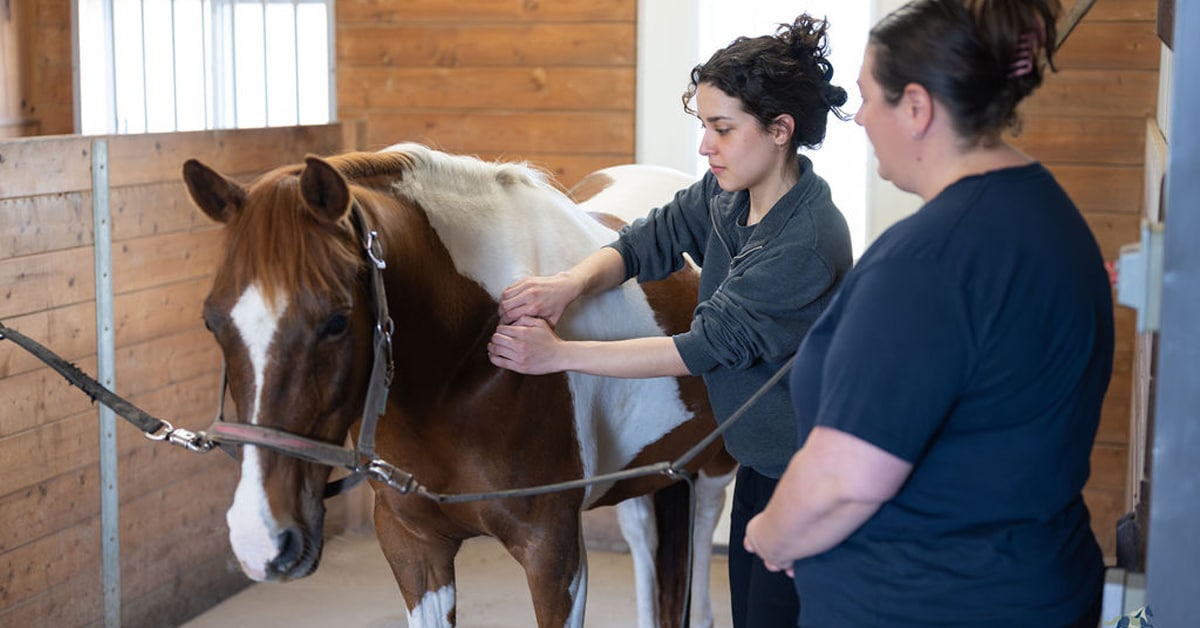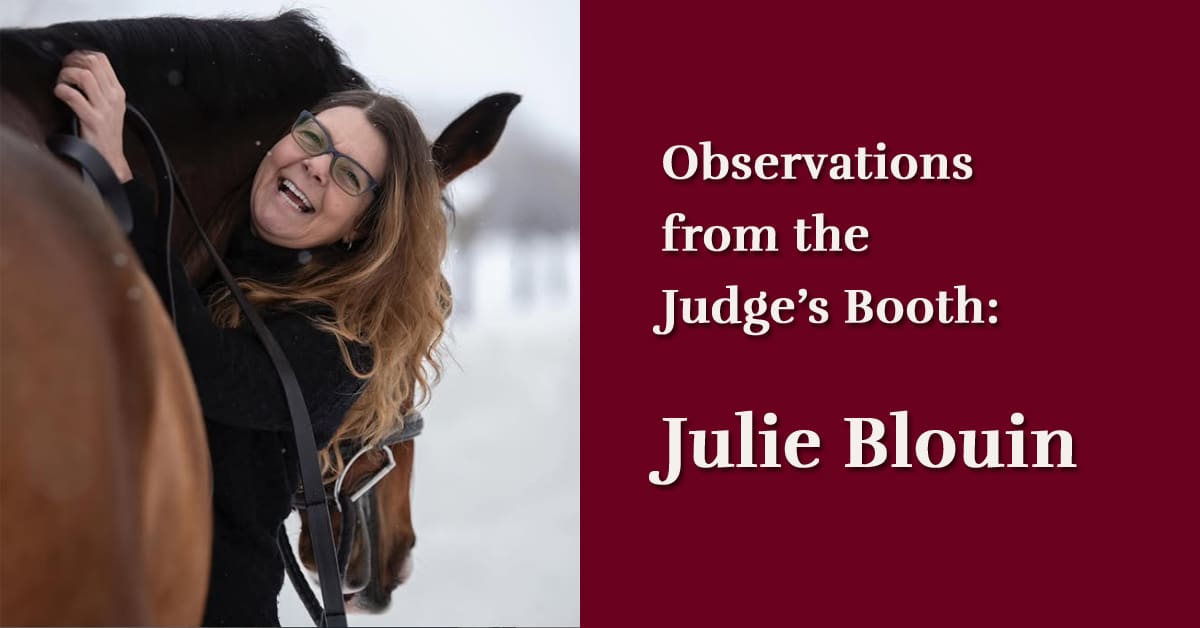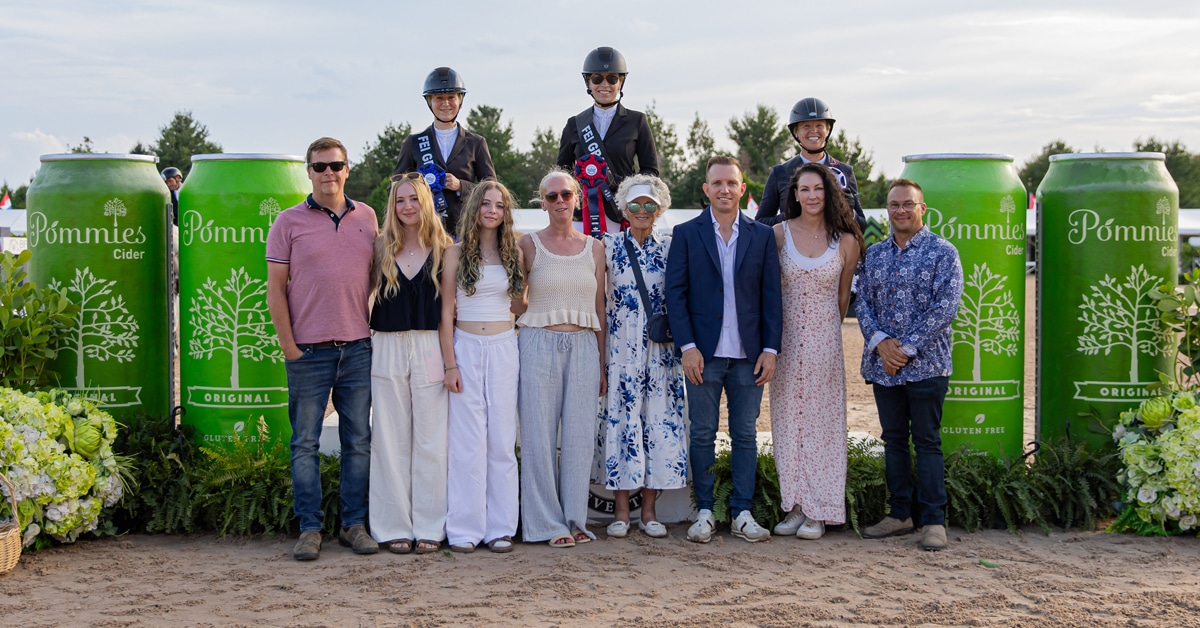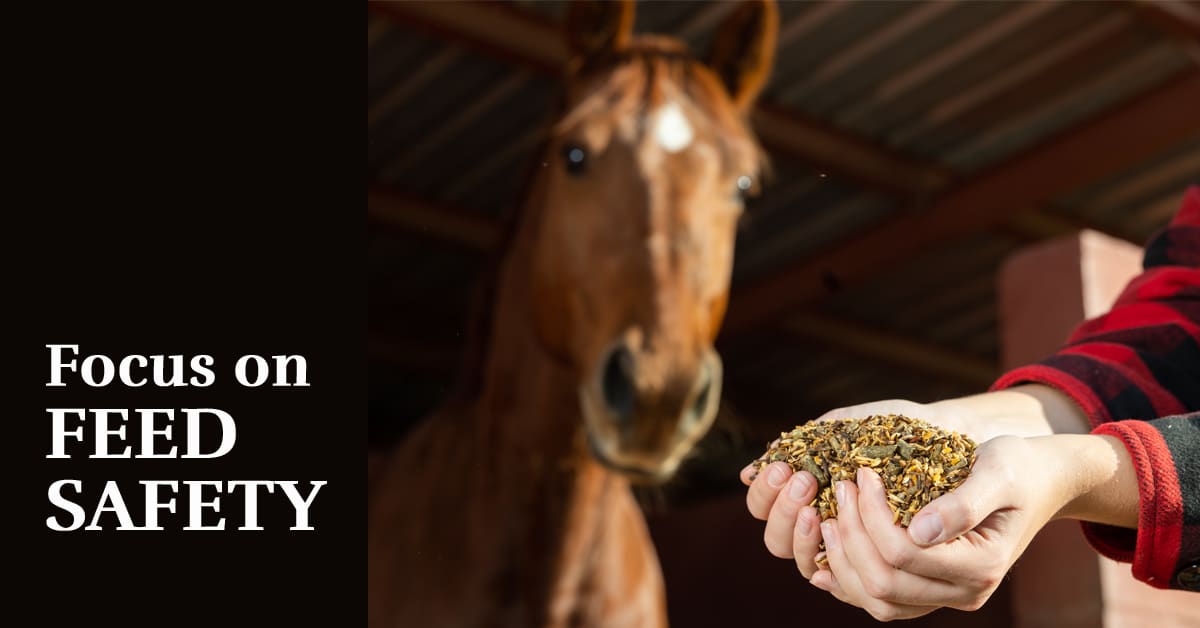Is it horse breeding, training techniques, national development series, owners with deep pockets, fabulous high-performance programs, or just the ‘luck of the Irish’? There is no denying that the Irish squad will be the ones to watch at the upcoming Paris Olympics this summer as podiums all over the world have been occupied by Irish riders following a rash of wins.
Currently, four Irish riders appear in the top-25 of the Longines World Rankings, led by Shane Sweetnam (9th), Daniel Coyle (12th), Conor Swail (19th) and Darragh Kenny (21st). That is two more than the reigning Olympic champions, Sweden. Ireland has 14 riders nestled in the top 100; by comparison, other showjumping powerhouses such as Germany have just 12, Belgium 9, USA and France 8 apiece, Sweden 5 and Canada has 4.
Here is a small sampling of what Irish riders have accomplished so far in 2024 alone:
- In January, Daniel Coyle and Legacy won twice in a week in the Longines FEI Jumping World Cup series – in Leipzig, Germany, and Amsterdam, The Netherlands.
- In February, an all-Irish podium finish in the $385,000 Fidelity Investments Grand Prix at WEF featured Darragh Kenny on Amsterdam 27 (Mario Deslauriers‘ former ride now majority owned by American/Israeli Teddy Vlock), Cian O’Connor aboard Maurice, and Jordan Coyle on For Gold. They were the only three Irish riders of the 40 entries.
- Daniel Coyle piloted Ariel Grange’s Farrel to win the $100,000 LeMieux Grand Prix at World Equestrian Center-Ocala.
- Daniel Coyle, riding the 11-year-old KWPN Incredible, owned in partnership with Ariel Grange, won the FEI World Cup qualifier at Live Oak International in Ocala this past March. (The 3rd-place horse was an Irish Sport horse named Millview Cicero, ridden by countryman Dermott Lennon.)
- Jordan Coyle and For Gold won the $150,000 Hermès Championship Jumper Series Final at WEF in late March and also the $116,000 Adequan WEF Challenge Cup Round 9.
- Conor Swail took the $117,000 Kubota CSI3* Grand Prix at Desert International Horse Park aboard Count Me In.
- On the good Zangersheide mare Legacy, also owned by Grange, Coyle led the Irish team to victory in the League of Nations team competition in Ocala.
- Conor Swail won the $225,000 Kentucky CSI4* Invitational Grand Prix aboard Casturano in April.
- Michael Duffy and Claptonn Mouche secured their first-ever Longines Global Champions Tour Grand Prix victory at Miami Beach, worth a cool €115,500.
- Shane Sweetnam took top honours in the with the grey ISH gelding James Kann Cruz in the $125,000 Hagyard Lexington Grand Prix CSI3*.
- In June, Shane Sweetnam was again victorious, this time riding Irandole du Flot in the Pays de la Loire Region Derby in La Baule.
There are many more … but you get the idea.
But the winning started years ago and seems to have accelerated exponentially since the COVID years. Canadians have witnessed the Irish win team and individual events at Spruce Meadows, Thunderbird, and the Royal. Not bad for an island of just seven million people (fewer than New York City, to put it in perspective)
Grass Roots and the Dublin Horse Show
The culture of horses is deeply ingrained in Ireland, a farming country where many riders also breed their own horses. Show Jumping Ireland is the the sport’s governing body in the country, overseeing the rules and codes of practice under which all affiliated competitions are run. SJI offers a number of leagues tailored to various age groups and abilities, from pony leagues to amateurs and young riders.
It all comes together every August at the Dublin Horse Show, a five-day extravaganza with something for everyone – breeding classes, young horse divisions, young rider classes, ponies, sport horse evaluations, hunters, jumpers and a large CSIO5* international division. Kids’ competitions are divided into three categories – Pony Riders, Children on Horses and Young Riders – and they must quality to compete at Dublin via regional shows, similar to how it it done in Canada. What is different, however, is that in order to even attempt to qualify, they must first complete required levels of the Mackey 5 Bar System, a progressive, structured program of equitation and horse management knowledge that ensures they are capable of certain riding and horsemanship skills and can navigate courses accurately and safely.
This qualification system is Horse Sport Ireland-recognized and is immensely helpful for identifying potential talent early so that it can be fostered to its full potential. It provides a sort of roadmap of candidates’ training, a standardization of training methods, and a proficiency reference for young athletes wanting to go abroad to work. It also identifies riders who may be candidates for the SJI’s National Training Development Squad.
International team manager Michael Blake was interviewed at the recent Mullingar Horse Show and spoke proudly of the Irish system producing young riders who are the envy of the industry right now. “If somebody came from another country and watched these young riders, they’d go home a little depressed at their own country because they have a lot of work to do,” he said honestly. “We’re not going to get complacent ‒ we have work to do and we will continue to do it. But when I took the job back in 2017, someone asked me ‘what’s the difference between the Irish rider and the North American rider?’ and to put it simply, the Irish guys know what’s under the hood.”
Witness the Irish riders’ hat-trick of wins at the recent FEI Jumping Nations Cup Youth competition in Hagen, GER, sweeping the ponies, childrens and juniors categories.
High Performance: Consistency is Key
Horse Sport Ireland (HSI) has been the governing body for equestrian sport in Ireland and Northern Ireland since 2008. It is responsible for education, sponsorship and high performance programs, selecting international teams, and also maintains the Irish Sport Horse studbook. We spoke to Bernard Jackman, Head of High Performance at HSI, about the role of the body, from grass roots to the top tiers.
“We’re very lucky that we’ve got an amazing culture for human and horse,” he explains. “A lot of our kids grow up having ridden horses. Some do show jumping, some do dressage, some do eventing and most do all of them and specialize bit later. They get a really good grounding basically in good horsemanship ‒ or horsewomanship.

Bernard Jackman, Head of High Performance Sport at Horse Sport Ireland.
“And then we’ve got a very good high performance pathway. Because there are so many kids doing it, we’ve got a very high level of competition. They need to be a very high performer as a youngster to make a pony team for Ireland or for the European Junior competitions. I think that drives the standard up. If it comes too easy, it doesn’t help anybody.”
Having top-rate horse-and-rider management at these early stages is crucial. “Because of the depth of our riders and the program we’ve put in place with Horse Sport Ireland ‒ high performance managers for the youth team and the pony team ‒ it leads to medals pretty much every year at the European level,” says Jackman. “And then they get used to winning and that breeds confidence and that makes them more passionate about the sport. A lot of them go on trying to make it as a career.”
He notes, as an example, “Darragh Kenny was on a youth team with Michael Blake, who’s our senior chef d’équipe. So there’s that trust, that understanding, that relationship that goes back a long, long time. In sports, cohesion is a big part of success and we’re very lucky we have good cohesion.”
Young talent cannot develop in a vacuum, however, and many riders leave the country to pursue work and experience at the best yards in Europe or North America. “It’s very difficult to be a professional rider in Ireland, because we don’t have that many shows,” says Jackman. “Obviously, to go to Europe where a lot of shows are, you have to get a ferry, which adds the travel time and cost. So a lot of show jumpers will actually leave Ireland when they’re nineteen or twenty and go to work in America or Canada or Europe in one of the big yards there. This type of apprenticeship is really good for them because it really tests their resilience and their passion, and obviously they learn in different environments.”
He notes proudly, “The depth of Irish riders at a professional level is incredible for a country of this size. We’ve got the chef d’equipe of our senior showjumping team, Michael Blake, who’s been in the job for the last six years, but he also had been a high performance youth manager before that. A lot of the riders that he’s working with now for the Nation’s Cups he coached or managed as kids. So you have that consistency.”
Much like with Canadian show jumping, it is tough managing riders who are scattered across the globe. “When we get to the senior level, Michael’s job is trying to manage riders who are in different continents and have different schedules and it’s not easy here, either,” admits Jackman. “We’re very lucky that our riders and our owners and our grooms are very supportive of our push to represent Ireland’s team, and they sacrifice a lot. For example, we were at Mullingar and we came second [in the Nations Cup] . Daniel Coyle is obviously based in Canada for Ariel Grange. Shane Sweetnam is based in the States, Darragh Kenny’s based in New York now. Cian O’Connor spends three months in Wellington, and he spends a lot of time in Europe as well. We have to try and bring people together who are a long way away as well.”
Beth Underhill: A Canadian Perspective
Who better to explain how things are run differently in Ireland than Beth Underhill, who is currently living and teaching at Coolmore Showjumping in Fethard, County Tipperary and coaching talented young rider Alice Wachman. She has discussed the topic with numerous people, including Irish show jumping team manager Michael Blake. “I would say it’s a several-pronged success story,” she says. “I think there was a period where they were not developing the young riders that they wanted to and they put a very structured coaching system in place. It’s a very collaborative effort; you don’t see trainers not letting people go to clinics or to ride with Cian for a period of time, or other top Irish riders. They’re much more open about learning and teaching and having that conversation so that riders learn from the best and have a very clear pathway to each next level of competition.”

Beth Underhill with Alice Wachman at Coolmore. Bernard Jackman commented, “The Wachman kids are very much part of our high performance pathway and John Magnier of Coolmore is a great supporter of showjumping in Ireland.” (photo courtesy Coolmore Showjumping)
She continues, “The second part that I think is huge is all of these kids, they’re so professional. They understand the rules, they’ve been well-educated, they are little horsemen and horsewomen. They understand what it takes to not only ride, but also the horsemanship that’s required to develop a horse, to feed a horse properly, to manage your stable. They’re extremely well-educated on that front and I think it creates strong riders with strong skills, and an understanding of what it takes to be successful in this business.”
She points to her student Alice. “They do all kinds of interesting things over here: for instance, if you have a farm, you study and learn all about it. Today [Alice] had to learn how to back up a trailer and a tractor around a corner. She has had to learn about crops and different types of fencing and farm animals. That’s nothing to do with school, that’s just an Irish thing. If you own farming property, the kids also need to be educated on what it takes to run and maintain a farm.”
Underhill sees a climate of cooperation in Ireland that is rarely present in the jealously-guarded world of coaching in Canada.
“There’s a strong environment of collaboration, which I find really refreshing and I think makes a huge difference,” she says. “All the top trainers and professionals are included with riders as they come along. I find in North America that everyone’s so protective. Many times I’ve done clinics and people have come up to me and said, ‘I really wanted to ride in your clinic, but my coach wouldn’t let me.’ That is just wrong to me. It’s so refreshing to see that spirit of education in these kids over here, and how the trainers work together.”
She notes how the system is uniform “so you don’t have coaches teaching all different ways. It is very much a consistent process of what the expectation is going from ponies to next level through to the Grand Prix ring.
“And they’re very honest about what it takes to get there. You’re not jollying these kids along; you’re saying, ‘you’re not moving up because you didn’t succeed at this aspect of this level. You’re going to go back and do your homework.’ You’ve got the coach, the chef d’equipe, the top riders in the country that have come up through the system and impart this knowledge fairly, honestly, but strongly, and it works.”
She recalls watching pony jumpers in the past in Canada. “When you see some of the teaching, and the kids who simply race around the course against the clock, there is no horsemanship. This is why we took the pony jumpers away from the Royal Winter Fair, because it was dangerous and the sport was not growing. These kids were not improving; they were staying at a meter, point nine, and just running.”
Underhill concludes, “[In Canada] there’s a lot of good coaching, but there’s also a lot of very weak coaching. We’re not creating the pathway or the strength to be honest with these people about what needs to happen. When you’re here [Ireland] and you watch what happens, you realize our country is nowhere near this. And it’s not just Canada; I think a lot of countries could come here and feel the same way.”

Daniel Coyle (IRL) and Incredible, winners of the Longines FEI Jumping World Cup Ocala. Coyle has been riding Ariel Grange’s horses since 2016. (FEI/Shannon Brinkman photo)
The Popularity of the Irish Pilot
Ariel Grange of Lothlorien Farm in Cheltenham and Ocala is one of the most high-profile horse owners in the sport in Canada and one of several, including Sandy Upton and Asta Torokvei, who utilize Irish riders to compete their horses. When asked why she turned to Daniel Coyle ‒ who was recently selected to represent Ireland at the Paris Olympics with Ariel’s good mare Legacy ‒ to campaign her top string, she remarked, “Daniel has been with me for about eight-and-a-half years now. Not only is it his innate ability, talent and dedication that sets him apart as a competitor, it is the relationship we have together that creates such a winning team. Whether it is a four-year-old or a fourteen-year-old, young horse training or five-star grand prix around the world, he treats them all the same and gives them all the respect, love and work they deserve for the task at hand.
“We have a unique situation in that we have ‘grown up’ together in this sport, so to speak,” Grange says. “After the passing of my mother [Sue], it was really between Dan and I to ensure Lothlorien made history in our own way and represented the amazing reputation that it already had. Daniel and I work together in all things for these horses, discussing each aspect and honouring each other’s skills to ensure they get the best care, training and success we can provide. I couldn’t be more proud to stand side-by-side and take on the showjumping world together.”
With Paris looming and a horse on the Irish team, Grange is excited about what the summer will bring.
“It is true the Irish riders are on most podiums around the world at the moment – fantastic momentum leaning into the Olympics!”
Surprisingly, Ireland has never won an individual or team gold Olympic medal, and in fact their only medal in Games history was a bronze earned by Cian O’Connor on Blue Loyd in London 2012. Could the tide be about to turn?
Bernard Jackman seems to think so. “We’ve got really good people working with us. We’ve got riders who are great and owners who give them the horsepower and drive and passion. So it’s all in place pretty well.”
The Latest









